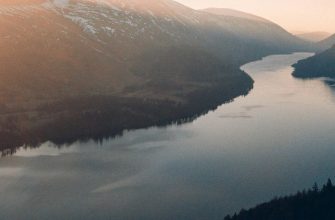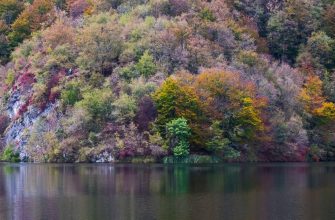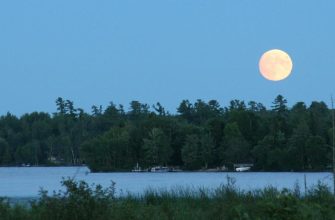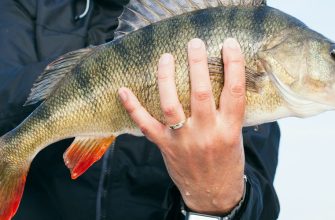- Where is Lake Washington?
- Location of Lake Washington
- Geographical Details
- Lake Washington Map
- Species You Might Catch
- Tips for Successful Fishing
- Campgrounds & RV Parks Nearby
- 1. Lake Sammamish State Park
- 2. Marymoor Park
- 3. Vasa Park Resort
- Cutthroat Trout Fishing in Lake Washington
- Where to Fish for Cutthroat Trout
- 1. Mercer Island
- 2. Holmes Point
- 3. Juanita Bay
- When to Catch Cutthroat Trout
- 1. Spring
- 2. Fall
- 3. Winter
- How to Catch Cutthroat Trout
- 1. Fly Fishing
- 2. Spin Fishing
- Trout Fishing in Winter
- 1. Choose the Right Gear
- 2. Use Slow Retrieves
- 3. Downsize Your Bait
- 4. Target Deep Pools
- Yellow Perch Fishing in Lake Washington
- Where to Fish for Yellow Perch
- 1. Mercer Island
- 2. Juanita Bay
- 3. Kenmore Log Boom Park
- When to Catch Yellow Perch
- 1. Spring
- 2. Summer
- 3. Fall
- How to Catch Yellow Perch
- 1. Fishing Gear
- 2. Bait and Lures
- 3. Techniques
- Bass Fishing in Lake Washington
- Where to Fish for Bass in Lake Washington
- 1. Mercer Island
- 2. Montlake Cut
- 3. Kenmore
- When to Catch Bass in Lake Washington
- How to Catch Bass in Lake Washington
- 1. Choose the Right Gear
- 2. Understand Bass Behavior
- 3. Use Different Techniques
- Smallmouth Bass Fishing in Lake Washington
- Why Lake Washington is a Haven for Smallmouth Bass
- The Perfect Environment for Smallmouth Bass
- The Best Time to Fish for Smallmouth Bass in Lake Washington
- Techniques and Tips for Smallmouth Bass Fishing in Lake Washington
- 1. Choose the Right Equipment
- 2. Locate Smallmouth Bass Hotspots
- 3. Select the Right Lures and Baits
- Largemouth Bass Fishing in Lake Washington
- The Perfect Environment for Largemouth Bass Fishing
- Water Temperature and Clarity
- Vegetation and Structure
- Oxygen Levels
- The Best Time to Fish for Largemouth Bass in Lake Washington
- 1. Season
- 2. Time of Day
- 4. Weather Conditions
- Techniques and Tips for Largemouth Bass Fishing in Lake Washington
- 1. Use a variety of lures
- 2. Learn to read the water
- 3. Practice catch and release
- Salmon Fishing in Lake Washington
- Species of Salmon in Lake Washington
- Coho Salmon
- Kokanee
- Sockeye Salmon
- Other Salmon Species
- Where to Fish for Salmon in Lake Washington
- North End of the Lake: Kenmore and Juanita Bay
- South End of the Lake: Mercer Island and Renton
- Eastside of the Lake: Bellevue and Kirkland
- When to Catch Salmon in Lake Washington
- Spring and Fall Seasons
- Migration Periods
- How to Catch Salmon in Lake Washington
- 1. Choose the Right Gear
- 2. Locate the Salmon
- 3. Use Different Techniques
- 4. Vary Your Lures and Baits
- 5. Practice Patience and Persistence
- Lake Washington Fishing Piers and Boat Launches
- 1. Best Fishing Piers on Lake Washington
- 1.1. Leschi Park Fishing Pier
- 1.2. Juanita Bay Park Fishing Pier
- 1.3. Gene Coulon Memorial Beach Park Fishing Pier
- 2. Top Boat Launches on Lake Washington
- 2.1. Magnuson Park Boat Launch
- 2.2. Gene Coulon Memorial Beach Park Boat Launch
- 2.3. Kenmore Boat Launch
- Fishing regulations at Lake Washington, WA
- Understanding the Washington Department of Fish and Wildlife (WDFW)
- What is the Washington Department of Fish and Wildlife (WDFW)?
- Importance of Fishing Regulations
- WDFW Fishing Regulations
- License Requirements
- Bag and Size Limits
- Seasons and Openings
- Fishing Methods and Gear
- Rod and Reel Fishing:
- Trolling:
- Bank Fishing:
- Boat Fishing:
- Best Fishing Near Lake Washington
- 1. Lake Sammamish
- Fishing in Lake Sammamish
- 2. Lake Stevens
- Fishing in Lake Stevens
- 3. Lake Washington Ship Canal
- Fishing in Lake Washington Ship Canal
- 4. Lake Samish
- Fishing in Lake Samish
- 5. Lake Cushman
- Fishing in Lake Cushman
- FAQs
- Q: What is Lake Washington fishing?
- Q: Where is Lake Washington located?
- Q: What are some popular fishing spots on Lake Washington?
- Q: Can I fish for kokanee in Lake Washington?
- Q: Are there any fishing opportunities for cutthroat trout in Lake Washington?
- Q: What are some fishing prospects on Lake Washington?
- Q: Are there fishing piers or boat docks available for fishing on Lake Washington?
- Q: Where can I find a fishing pier on Lake Washington?
- Q: What are some fishing tips for fishing on Lake Washington?
- Q: Is fishing allowed in Lake Washington year-round?
Lake Washington, located in the beautiful state of Washington, is not just any ordinary lake. It is one of the largest natural lakes in the state and is a true paradise for fishing enthusiasts.
Located between Seattle and the northwestern part of the state, this huge lake offers anglers ample opportunities to explore its depths.
Its proximity to the city makes it easily accessible to locals and visitors alike.
Lake Washington is home to dozens of fish species, from rainbow trout and bass to coastal trout and crappie, anglers have a wide variety to choose from.
Whether you prefer fly fishing, bait fishing or trolling, Lake Washington has something to offer.
One of the best features of Lake Washington is its accessibility. There are numerous piers and boat ramps scattered along the shore, allowing anglers to easily access the lake and find the perfect fishing spot. Seward Park, located in Seattle on the west side of the lake, has a popular fishing pier. In addition, Gene Coulon Park in Renton has a pier and boat launch ramp with easy access to the lake.

These facilities provide services such as boat rentals, fuel, and equipment to ensure you have a trouble-free fishing experience.
When fishing on Lake Washington, it is important to keep in mind the various rules and guidelines to protect the lake and its ecosystem. To avoid upsetting the delicate balance of the lake, it is highly recommended that you fish close to shore and use appropriate fishing lures.
Whether you are an experienced angler or just starting out, fishing on Lake Washington offers a fantastic experience for everyone. So grab your fishing gear, head to Lake Washington and get ready for an unforgettable fishing adventure.
Where is Lake Washington?

Location of Lake Washington
Geographical Details
Lake Washington is situated in King County, Washington, bordered by the cities of Seattle, Bellevue, and Renton. It covers approximately 22,138 acres (35 square miles) and has a maximum depth of 214 feet. The lake is part of a chain of lakes and waterways that includes Lake Union and the Lake Washington Ship Canal.
Lake Washington Map
To get a better understanding of Lake Washington’s location and its surrounding areas, it is helpful to refer to a map: https://mapcarta.com/23975938/Map
Here is a map showcasing the lake’s position and nearby landmarks:
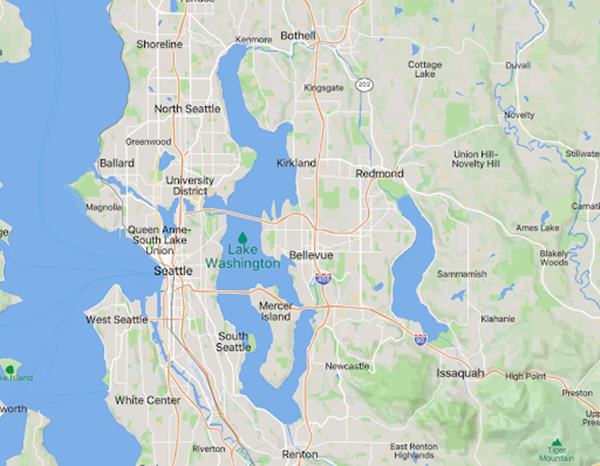
Species You Might Catch
Lake Washington is renowned for its diverse range of fish species, making it a favorite destination for anglers. Some of the species you might catch while fishing in the lake include:
- Rainbow Trout
- Largemouth Bass
- Smallmouth Bass
- Yellow Perch
- Cutthroat Trout
- Kokanee Salmon
- Carp
- Catfish
Tips for Successful Fishing
To increase your chances of a successful fishing trip at Lake Washington, consider the following tips:
- Research the best fishing spots: Familiarize yourself with the lake’s top fishing spots to maximize your chances of catching your desired species.
- Use the right bait and lures: Different fish species have different preferences when it comes to bait and lures. Do some research or consult local anglers to determine the most effective options.
- Be mindful of fishing regulations: Familiarize yourself with the fishing regulations in the area to ensure you are fishing within the legal limits and following any catch-and-release guidelines.
Campgrounds & RV Parks Nearby
1. Lake Sammamish State Park
Located just west of Lake Washington, Lake Sammamish State Park offers a picturesque camping experience with stunning views of the lake and surrounding nature. The park features over 500 acres of land, including camping sites with access to amenities such as restrooms, showers, and picnic areas. It is an ideal spot for a family getaway or a relaxing weekend retreat.
2. Marymoor Park
Situated on the northwestern shore of Lake Sammamish, Marymoor Park offers a unique camping experience with its vast open spaces and recreational facilities. The park provides RV camping opportunities, with options for electricity and water hookups. Visitors can enjoy activities such as hiking, biking, and birdwatching while being surrounded by the beauty of the lake and its surroundings.
3. Vasa Park Resort
Located on the eastern shore of Lake Sammamish, Vasa Park Resort offers a range of camping options, including tent sites and RV hookups. The park features beautiful waterfront views, swimming areas, and picnic spots. It is an excellent choice for those seeking a peaceful camping experience while still being close to the attractions and amenities of Lake Washington.
Cutthroat Trout Fishing in Lake Washington
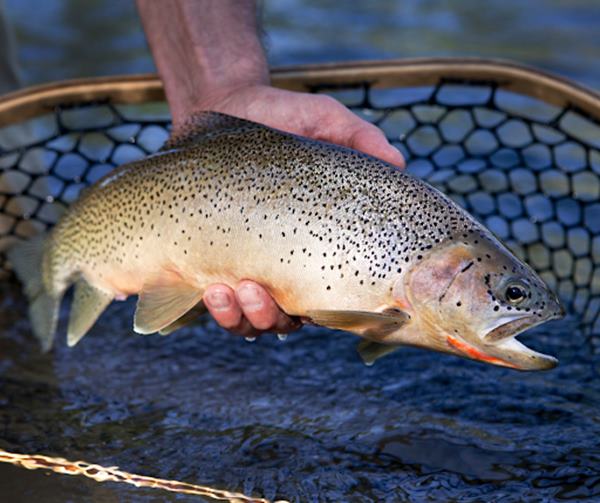
Where to Fish for Cutthroat Trout
1. Mercer Island
Explore the waters around Mercer Island, particularly the areas near the I-90 bridge and the southern shore of the island.
Target shallow bays, submerged structures, and drop-offs where Cutthroat Trout often seek forage fish.
2. Holmes Point
Head to Holmes Point on the northeastern shore of Lake Washington.
Look for rocky areas and deep pockets where Cutthroat Trout gather to feed.
3. Juanita Bay
Visit Juanita Bay, known for its rich aquatic vegetation and thriving fish population.
Focus on the edges of weed beds and submerged logs where Cutthroat Trout are likely to hide.
When to Catch Cutthroat Trout
1. Spring
Spring is an excellent time to target Cutthroat Trout in Lake Washington.
As the waters warm up, the trout become more active and move closer to the surface.
Look for trout in shallow waters near the shore, as they search for insects and small baitfish.
2. Fall
Fall is another prime season for Cutthroat Trout fishing in Lake Washington.
As the water temperature cools down, the trout become more aggressive and feed heavily before winter.
Focus on deeper waters and use sinking lines to reach the trout at various depths.
3. Winter
Winter presents a unique challenge for trout anglers, but it can be incredibly rewarding.
Target slow-moving pools and deeper sections of the lake where the trout gather to conserve energy.
Use slow retrieves and smaller bait to entice the trout in colder water temperatures.
How to Catch Cutthroat Trout
1. Fly Fishing
Fly fishing is a popular method for targeting Cutthroat Trout in Lake Washington.
Use small, lightweight flies that mimic the insects and baitfish found in the lake.
Cast your fly near submerged structures, drop-offs, and weed beds to entice the trout.
2. Spin Fishing
Spin fishing is another effective technique for catching Cutthroat Trout.
Use lightweight spinning rods and reels paired with small spoons, spinners, or plugs.
Vary your retrieval speed and depth to find the trout’s preferred feeding zone.
Trout Fishing in Winter
1. Choose the Right Gear
Use a lightweight rod and reel combo suitable for winter fishing conditions.
Opt for a slow-action rod and a reel with a smooth drag system to handle larger trout.
2. Use Slow Retrieves
Cutthroat Trout are less active in winter, so slow retrieves are more effective.
Allow your bait or lure to sink deeper before starting a slow and steady retrieve.
3. Downsize Your Bait
In colder water temperatures, trout tend to be less aggressive.
Use smaller bait or lures to match their diminished appetite and increase your chances of a bite.
4. Target Deep Pools
Cutthroat Trout often seek deeper pools in winter, where they can conserve energy.
Focus your efforts on these areas, using sinking lines or weighted bait to reach the trout.
Yellow Perch Fishing in Lake Washington
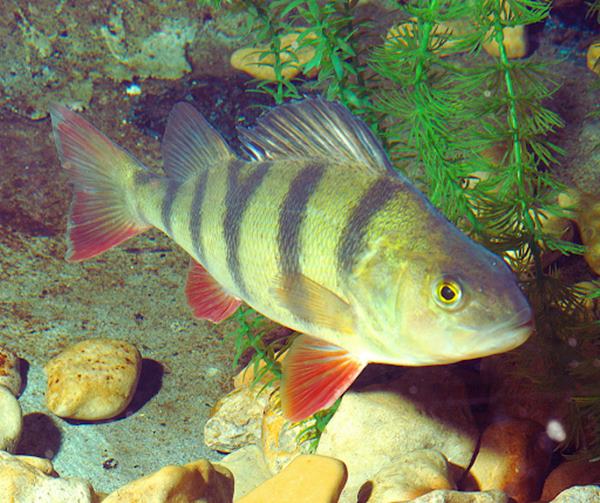
Where to Fish for Yellow Perch
1. Mercer Island
Mercer Island, located in the southern part of Lake Washington, offers excellent fishing opportunities for yellow perch.
Focus your efforts near the docks and piers, as these structures provide ideal habitats for perch.
Look for submerged vegetation and drop-offs, as perch tend to congregate in these areas.
2. Juanita Bay
Juanita Bay, situated on the northeast side of Lake Washington, is another hotspot for yellow perch.
Explore the shallow areas near the bay’s edges, as perch likes to feed on insects and small baitfish in these areas.
Use a fish finder to locate schools of perch, which often gather around submerged structures, such as fallen trees or rock formations.
3. Kenmore Log Boom Park
Kenmore Log Boom Park, located in the northern part of Lake Washington, is a popular fishing destination for yellow perch.
Focus your efforts near the log booms, as they provide shelter and attract baitfish, which, in turn, attract perch.
Look for deeper areas near the booms, as perch tend to move to deeper waters during the warmer months.
When to Catch Yellow Perch
1. Spring
As the water temperature rises in spring, yellow perch become more active and move towards shallower areas.
Look for them in the shallows, especially near vegetation, as they feed on insects and small baitfish.
Early morning and late afternoon are often the best times to catch yellow perch during this season.
2. Summer
During the summer months, yellow perch tend to move to deeper waters to escape the warmer surface temperatures.
Focus your efforts in deeper areas near drop-offs, submerged structures, and channels.
Early morning and late evening are the prime times to catch yellow perch in summer, as they become more active during these cooler periods.
3. Fall
Fall is an excellent time to catch yellow perch, as they move back towards shallower areas in preparation for winter.
Look for them in the shallows near vegetation, fallen trees, and docks.
Yellow perch tend to feed heavily during this time to build up their energy reserves.
How to Catch Yellow Perch
1. Fishing Gear
Use an ultralight or light spinning rod and reel combo for yellow perch fishing.
Opt for a fishing line between 4-8 lb test, depending on the size of perch you are targeting.
Use small hooks (sizes 4-8) and a variety of bait options, such as worms, minnows, or small jigs.
2. Bait and Lures
Live bait, such as worms or minnows, is highly effective for yellow perch fishing.
Consider using small jigs with soft plastic bodies in vibrant colors, as they can mimic the movement of prey and attract aggressive strikes.
3. Techniques
Cast your bait or lure near submerged structures, drop-offs, or areas with vegetation.
Let your bait sink to the desired depth and retrieve it with small twitches or a slow, steady retrieve.
Pay attention to any bites or subtle movements on your line, as yellow perch can be delicate bite
Bass Fishing in Lake Washington
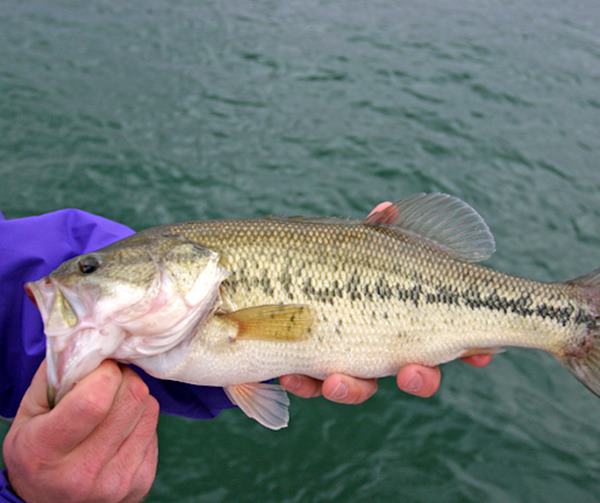
Where to Fish for Bass in Lake Washington
1. Mercer Island
- Luther Burbank Park
Located on the northern end of Mercer Island, Luther Burbank Park is a popular spot for bass fishing. The park offers easy access to the lake and features a fishing pier, making it an excellent choice for anglers of all skill levels.
- Clarke Beach
Situated on the western shore of Mercer Island, Clarke Beach is another great location for bass fishing. The beach provides a peaceful environment and a convenient launch point for fishing boats.
2. Montlake Cut
- Union Bay
The Montlake Cut, connecting Lake Washington to Lake Union, is known for its abundant bass population. Union Bay, located on the eastern side of the cut, offers excellent opportunities for catching both smallmouth and largemouth bass.
- Portage Bay
Adjacent to the Montlake Cut, Portage Bay is another hotspot for bass fishing in Lake Washington. With its calm waters and proximity to the cut, Portage Bay is a favorite among local anglers.
3. Kenmore
- Log Boom Park
Situated in the city of Kenmore, Log Boom Park is a fantastic spot for bass fishing. The park features a fishing pier and a boat launch, providing anglers with various options for accessing the lake.
- Kenmore Industrial Park
Located near Log Boom Park, the Kenmore Industrial Park area offers excellent bass fishing opportunities. Anglers can explore the various coves and channels in this area to find their prized catch.
When to Catch Bass in Lake Washington
- Spring
During the spring months, bass fishing in Lake Washington is at its prime. As the water temperature begins to rise, bass become more active and start moving towards shallow areas to spawn. This makes spring an ideal time to target both smallmouth and largemouth bass.
- Summer
Summer is another great season for bass fishing in Lake Washington. The warmer water temperatures encourage bass to feed more aggressively, making them more likely to strike your bait or lure. Early mornings and evenings are often the most productive times to fish during the summer.
- Fall
As the weather begins to cool down in the fall, bass become more active again. They start feeding heavily to prepare for the upcoming winter months. Fall can be an excellent time to catch trophy-sized bass in Lake Washington.
- Winter
While bass fishing in Lake Washington during the winter months can be challenging, it is still possible to have success.
Bass tend to move to deeper areas and become less active in colder water temperatures. However, with the right techniques and patience, you can still catch bass during this season.
How to Catch Bass in Lake Washington
1. Choose the Right Gear
To increase your chances of success, it is important to use the right gear when bass fishing in Lake Washington. Consider the following:
- Fishing rod: Opt for a medium to heavy-action fishing rod that can handle the weight and fight of bass.
- Fishing reel: Choose a reel with a smooth drag system and a high gear ratio for quick retrieval.
- Fishing line: Use a quality fishing line with a suitable pound test, such as monofilament or fluorocarbon.
- Lures and baits: Experiment with a variety of lures and baits, including soft plastics, crankbaits, spinnerbaits, and topwater lures.
Read more: Texas Fishing Lakes – Explore the Best Bass Fishing Opportunities in Texas
2. Understand Bass Behavior
To effectively catch bass in Lake Washington, it is crucial to understand their behavior. Bass are known to hide in cover, such as submerged vegetation, fallen trees, or rocky structures. They also tend to feed during low-light conditions, such as early morning or late evening. By targeting these areas and times, you can increase your chances of hooking a bass.
3. Use Different Techniques
Experiment with different fishing techniques to find what works best for you and the conditions of Lake Washington. Some effective techniques for catching bass include:
- Casting and retrieving: Cast your lure or bait near the cover and retrieve it with various speeds and patterns to imitate prey.
- Flipping and pitching: This technique involves flipping or pitching your lure into specific spots near cover, allowing it to sink slowly. It can be particularly effective when targeting bass hiding in vegetation or under docks.
- Texas rigging: This popular technique involves rigging a soft plastic bait weedless by using a bullet weight and a hook. It allows you to fish in heavy cover without getting snagged.
Smallmouth Bass Fishing in Lake Washington
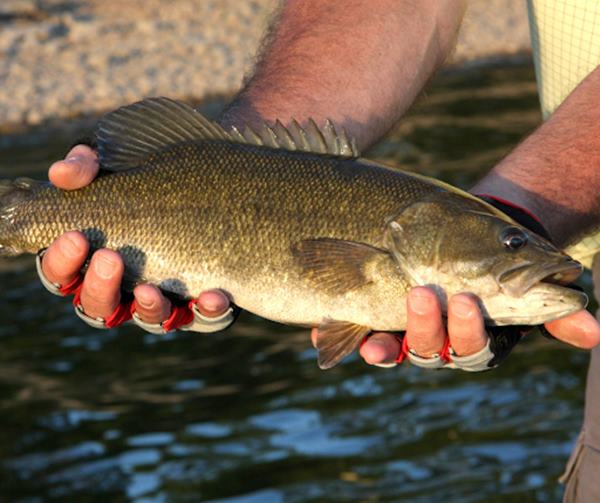
Why Lake Washington is a Haven for Smallmouth Bass
The Perfect Environment for Smallmouth Bass
Lake Washington offers an ideal environment for smallmouth bass to thrive. Here’s why:
- Water Clarity: The lake’s crystal-clear waters provide excellent visibility, allowing anglers to spot smallmouth bass lurking in the depths.
- Abundant Food Sources: Lake Washington is teeming with an array of baitfish, crayfish, and insects that serve as the primary food source for smallmouth bass. This abundance of prey ensures healthy and robust bass populations.
- Underwater Structures: The lake’s diverse underwater structures, such as rock piles, submerged logs, and drop-offs, create perfect hiding spots for smallmouth bass. These structures offer shelter and ambush points, making it easier to locate and target these elusive fish.
The Best Time to Fish for Smallmouth Bass in Lake Washington
Understanding the optimal time to fish can significantly impact your success rate. Here are some key factors to consider:
- Season: Smallmouth bass fishing in Lake Washington is most productive during the warmer months, from late spring to early fall. These fish become more active as the water temperature rises, making them more likely to bite.
- Time of Day: Early morning and late evening are prime times to target smallmouth bass. During these periods, the fish are more active and likely to be feeding near the surface.
- Weather Conditions: Overcast days, light rain, and moderate wind can stimulate smallmouth bass activity. These conditions create a camouflage effect and disrupt the water’s surface, making the fish more comfortable and less cautious.
Techniques and Tips for Smallmouth Bass Fishing in Lake Washington
1. Choose the Right Equipment
To maximize your chances of success, it’s essential to have the appropriate fishing gear. Here are some recommendations:
- Fishing Rod: A medium to medium-heavy spinning rod, around 6 to 7 feet in length, provides the ideal balance of sensitivity and strength for smallmouth bass fishing.
- Fishing Reel: Pair your rod with a high-quality spinning reel, preferably with a smooth drag system and a high gear ratio for fast retrieves.
- Fishing Line: Opt for a braided or fluorocarbon fishing line with a test strength of 8 to 12 pounds. These lines offer excellent sensitivity and are less visible underwater.
2. Locate Smallmouth Bass Hotspots
Finding the right areas where smallmouth bass congregate is crucial. Here are some popular hotspots in Lake Washington:
- Shallow Rocky Areas: Smallmouth bass often inhabits rocky shorelines, submerged boulders, and rocky points. These areas provide cover and attract baitfish.
- Submerged Vegetation: Look for areas with submerged vegetation, such as weed beds and lily pads. These locations serve as feeding grounds for smallmouth bass.
- Drop-offs and Underwater Structures: Smallmouth bass frequently position themselves near drop-offs, submerged logs, and underwater ledges. These structures offer ambush points and serve as natural feeding areas.
3. Select the Right Lures and Baits
Choosing the appropriate lures and baits can significantly increase your chances of enticing a smallmouth bass to strike. Here are some effective options:
- Soft Plastic Baits: Texas-rigged worms, creature baits, and finesse worms are popular choices for smallmouth bass. They mimic natural prey and can be worked effectively around rocky structures.
- Crankbaits: Shallow- to medium-diving crankbaits in natural colors are effective for covering water and triggering strikes from active smallmouth bass.
- Topwater Lures: During the early morning or late evening, try using topwater lures such as poppers, buzzbaits, or walk-the-dog style baits. These lures create surface disturbances that can entice aggressive strikes.
Largemouth Bass Fishing in Lake Washington
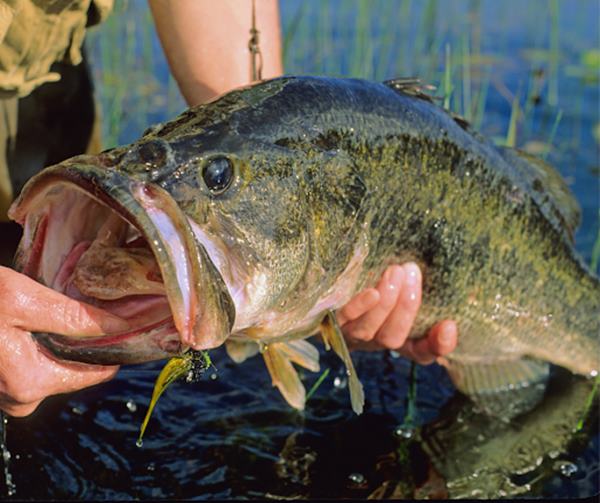
The Perfect Environment for Largemouth Bass Fishing
Water Temperature and Clarity
Largemouth bass thrive in water temperatures between 65°F and 75°F. Lake Washington offers these ideal water conditions, making it an excellent habitat for bass. Additionally, the lake’s water clarity allows for good visibility, enabling anglers to effectively target bass in different depths.
Vegetation and Structure
Lake Washington is abundant with aquatic vegetation such as lily pads, submerged grass, and weed beds. These provide cover and food sources for largemouth bass, making them prime areas for fishing. Look for areas with submerged structures like fallen trees, brush piles, and rocks, as they attract bass seeking shelter.
Oxygen Levels
Largemouth bass require sufficient oxygen levels to survive and thrive. Lake Washington has a healthy ecosystem, ensuring ample oxygen availability throughout the lake. However, be mindful of oxygen-depleted areas during the summer months, as they may result in fish moving to more oxygen-rich zones.
The Best Time to Fish for Largemouth Bass in Lake Washington
1. Season
Spring: The spring season is widely regarded as the best time to fish for largemouth bass in Lake Washington. As the water temperature begins to rise, the bass becomes more active and starts to move into shallower areas. During this time, they are preparing for the spawning season and are more likely to bite. Spring offers a great opportunity to catch larger and more aggressive bass.
Summer: Summer can also be a productive season for fishing largemouth bass in Lake Washington. The warmer water temperatures make the bass more active and willing to feed. However, the key is to fish early in the morning or late in the evening when the water is cooler and the bass is more active. During the hotter parts of the day, the bass tends to seek shade and become less active, making it more challenging to catch them.
Fall: Fall is another excellent season for fishing largemouth bass in Lake Washington. As the water cools down, the bass becomes more active and feeds voraciously to prepare for the upcoming winter months. They tend to move toward shallow areas and can be found around vegetation and structures. Fishing in the early mornings and late afternoons during this season can yield great results.
Winter: Fishing for largemouth bass in Lake Washington during the winter months can be more challenging. The colder water temperatures slow down the fish’s metabolism, making them less active and less likely to bite. However, if you’re up for the challenge, you can still catch bass during this season. Focus on fishing in deeper areas where the bass may be seeking warmer water, and use slow-moving lures or live bait to entice them.
2. Time of Day
Early Morning: The early morning hours, just after sunrise, are often considered the best time of day to fish for largemouth bass in Lake Washington. During this time, the water is cooler, and the bass are more active and hungry after a night of rest. They are more likely to be feeding near the surface and can be easily enticed by topwater lures or shallow-running crankbaits.
Late Evening: Similar to the early morning, the late evening hours, just before sunset, can also be a prime time for bass fishing. As the day cools down, the bass becomes more active and starts to feed again. They tend to move towards shallower areas and can be found near structures or vegetation. Fishing with soft plastics or jigs during this time can yield great results.
Midday: While the early morning and late evening are generally the most productive times to fish for largemouth bass, they can still be caught during the midday hours. However, it’s important to adjust your fishing techniques and target deeper areas where the bass may be seeking cooler water and shade. Use slow-moving lures or live bait and be patient, as the bass may be less active during this time.
4. Weather Conditions
Sunny and Clear: Sunny and clear weather conditions can make bass fishing more challenging, especially during the hotter parts of the day. However, bass can still be caught during these conditions by adjusting your fishing techniques. Focus on fishing in shaded areas, such as under docks or near overhanging trees, where the bass may seek refuge from the sun. Additionally, using lures that mimic injured baitfish can entice the bass to strike.
Cloudy and Overcast: Cloudy and overcast weather conditions can be advantageous for bass fishing. The diffused light makes the bass feel more comfortable and less cautious, increasing their willingness to bite. During these conditions, try using lures that create more vibration or noise, such as spinnerbaits or chatterbaits, to attract the attention of the bass.
Rainy and Stormy: Rainy and stormy weather can be a great time to fish for largemouth bass in Lake Washington. The rain and the disturbance in the water can stimulate the bass’s feeding behavior, making them more active and aggressive. Fishing with lures that create a lot of commotion, such as buzzbaits or frogs, can be highly effective during these conditions. However, always prioritize your safety and avoid fishing during severe storms or lightning.
Techniques and Tips for Largemouth Bass Fishing in Lake Washington
1. Use a variety of lures
Experiment with different types of lures, including topwater, crankbaits, soft plastics, and jigs, to find what works best for the conditions and the bass’s preferences.
2. Learn to read the water
Look for signs of bass activity, such as surface disturbances, baitfish schools, or jumping fish. Understanding the behavior and movements of the bass will help you target them more effectively.
3. Practice catch and release
Largemouth bass are a valuable resource, and practicing catch and release helps maintain a healthy fish population in Lake Washington. Handle the fish with care, use proper fishing gear, and release them quickly and safely.
Salmon Fishing in Lake Washington
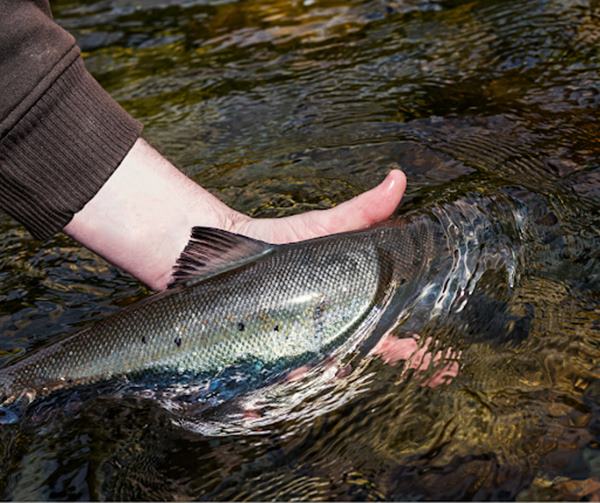
Species of Salmon in Lake Washington
Coho Salmon
Coho salmon, also known as silver salmon, are prized for their aggressive nature and acrobatic displays when hooked. They are known to be strong fighters, making them a thrilling catch for anglers. Coho salmon can be found in Lake Washington from late summer to early winter, with peak fishing season occurring in September and October.
Kokanee
Kokanee salmon, a landlocked version of sockeye salmon, are a popular target for anglers due to their abundance in Lake Washington. Known for their vibrant red color and delicious taste, Kokanee salmon can be caught year-round in the lake. However, the best time to target them is during the spring and fall seasons when they are more active.
Sockeye Salmon
Sockeye salmon, also known as red salmon, are known for their rich flavor and deep red flesh. While they are not as abundant as Kokanee in Lake Washington, Sockeye salmon can still be targeted during their migration periods in June and July. They can be a challenging catch, but the reward is well worth the effort.
Other Salmon Species
In addition to Coho, Kokanee, and Sockeye salmon, Lake Washington is also home to other salmon species such as Chinook (King) salmon and Pink salmon. While Chinook salmon are less common in the lake, Pink salmon can be found during odd-numbered years when they return to spawn. Keep an eye out for these species during their respective migration seasons.
Where to Fish for Salmon in Lake Washington
North End of the Lake: Kenmore and Juanita Bay
The northern end of Lake Washington offers excellent fishing opportunities for salmon. Kenmore and Juanita Bay are popular spots known for their productive waters. The shallow areas near the shoreline are particularly fruitful for catching salmon.
South End of the Lake: Mercer Island and Renton
The southern end of the lake, around Mercer Island and Renton, is another great location for salmon fishing. The deep waters and rocky structures attract salmon, making it an ideal spot for anglers. Try fishing near the docks, points, and drop-offs for the best results.
Eastside of the Lake: Bellevue and Kirkland
The east side of Lake Washington, including Bellevue and Kirkland, offers a variety of fishing opportunities for salmon. Look for areas with submerged structures, weed beds, and drop-offs. These spots provide cover and attract salmon, increasing your chances of a successful catch.
When to Catch Salmon in Lake Washington
Spring and Fall Seasons
Spring and fall are prime seasons for salmon fishing in Lake Washington. During these times, the water temperatures are optimal, and the salmon are more active. The spring season, from March to May, is excellent for targeting Kokanee salmon. In the fall, from September to November, Coho salmon are abundant and provide exciting fishing opportunities.
Migration Periods
Salmon migrate to Lake Washington during specific periods, offering anglers a chance to catch them in large numbers. Sockeye salmon migrate in June and July, while Pink salmon return during odd-numbered years. Plan your fishing trips accordingly to coincide with these migration periods for a higher chance of success.
How to Catch Salmon in Lake Washington
1. Choose the Right Gear
To catch salmon in Lake Washington, you’ll need the appropriate gear. Make sure to have the following items in your tackle box: – Medium to heavy-action fishing rod – Reel with a reliable drag system – 10-20 pound test line – Variety of lures, such as spoons, spinners, and plugs – Bait, such as herring, shrimp, or salmon eggs
2. Locate the Salmon
Use a fishfinder or look for signs of salmon activity, such as jumping fish or seagulls diving into the water. Pay attention to areas with submerged structures, drop-offs, and weed beds where salmon are likely to gather.
3. Use Different Techniques
Experiment with different fishing techniques to increase your chances of catching salmon. Some effective methods include: – Trolling: Use a downrigger or lead weights to present your lure at the desired depth and troll slowly through the water. – Casting: Cast your lure towards shore or structures and retrieve it at varying speeds to mimic a wounded fish. – Drift fishing: Use a float or bobber to suspend your bait at the desired depth and let it drift naturally with the current.
4. Vary Your Lures and Baits
Salmon can be selective in their feeding habits, so it’s essential to have a variety of lures and baits in your arsenal. Experiment with different colors, sizes, and types of lures to find what works best on any given day. Similarly, try using different baits such as herring, shrimp, or salmon eggs to entice the salmon.
5. Practice Patience and Persistence
Salmon fishing requires patience and persistence. Don’t get discouraged if you don’t get a bite right away. Keep trying different spots, techniques, and lures until you find what works. Remember, the thrill of landing that prized salmon is well worth the effort.
Lake Washington Fishing Piers and Boat Launches
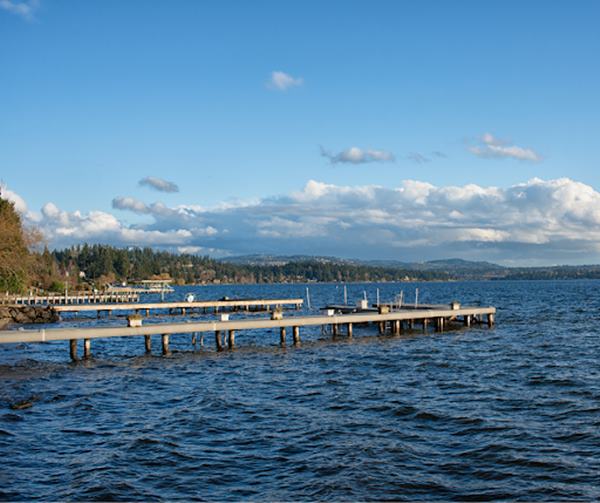
One of the key attractions of fishing in Lake Washington is the availability of boat Launches. Boat docks for fishing are strategically placed around the lake, providing easy access to prime fishing spots. Anglers can easily launch their boats and navigate the vast lake to find their preferred fishing grounds. The convenience of boat docks ensures that fishermen can explore various areas and increase their chances of landing a big catch.
1. Best Fishing Piers on Lake Washington
1.1. Leschi Park Fishing Pier
Situated on the eastern shore of Lake Washington, Leschi Park Fishing Pier offers stunning views and excellent fishing opportunities. This popular pier is known for its abundance of perch, bass, and trout. Enjoy the peaceful surroundings as you cast your line and wait for the fish to bite.
1.2. Juanita Bay Park Fishing Pier
Located in Kirkland, Juanita Bay Park boasts a beautiful fishing pier that extends into Lake Washington. This pier provides access to a variety of fish species, including salmon, trout, and bass. Enjoy the tranquility of the bay as you reel in your catch and take in the panoramic views.
1.3. Gene Coulon Memorial Beach Park Fishing Pier
Gene Coulon Memorial Beach Park, situated in Renton, features a spacious fishing pier that attracts anglers of all skill levels. This pier offers prime fishing opportunities for salmon, trout, and bass. Take advantage of the park’s amenities, including picnic areas and walking trails, for a complete outdoor experience.
2. Top Boat Launches on Lake Washington
2.1. Magnuson Park Boat Launch
Magnuson Park, located in Seattle, is home to one of the most popular boat launches on Lake Washington. This well-maintained facility provides easy access to the water and ample parking for boat trailers. Launch your boat and explore the vast expanse of the lake, where you can fish for salmon, trout, and various other species.
2.2. Gene Coulon Memorial Beach Park Boat Launch
In addition to its fishing pier, Gene Coulon Memorial Beach Park offers a convenient boat launch for avid boaters. This launch provides easy access to Lake Washington’s waters, allowing you to embark on your fishing expedition or leisurely cruise with ease. Enjoy the park’s amenities and stunning views as you set sail.
2.3. Kenmore Boat Launch
Situated in the city of Kenmore, this boat launch is a favorite among locals and visitors alike. Launch your boat and navigate the waters of Lake Washington to discover prime fishing spots. Whether you’re targeting salmon, trout, or bass, this boat launch will ensure a smooth and hassle-free experience.
Fishing regulations at Lake Washington, WA
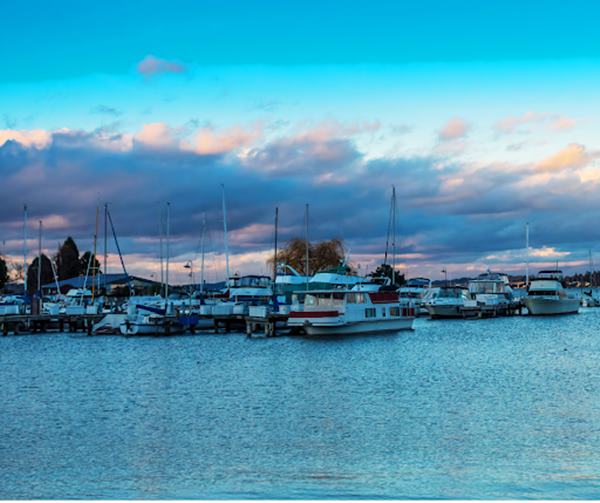
Understanding the Washington Department of Fish and Wildlife (WDFW)
What is the Washington Department of Fish and Wildlife (WDFW)?
The Washington Department of Fish and Wildlife (WDFW) is the government agency responsible for managing and conserving the state’s fish and wildlife resources. It plays a crucial role in setting fishing regulations, enforcing them, and ensuring the sustainability of fish populations in Washington’s lakes, rivers, and marine areas.
Importance of Fishing Regulations
Fishing regulations are essential for maintaining healthy fish populations, protecting endangered species, and preserving the ecological balance of lakes and rivers. These regulations also help to ensure fair and responsible fishing practices, preventing overfishing and promoting the long-term sustainability of fish stocks.
Read more: Lake Perris Fishing: Discover the Best Spots and Tips for Anglers at Lake Perris
WDFW Fishing Regulations
License Requirements
To fish at Lake Washington, anglers are required to have a valid Washington State fishing license. These licenses can be purchased online through the Washington Department of Fish and Wildlife website or from authorized license vendors. It is important to keep your fishing license with you at all times while fishing at Lake Washington.
Bag and Size Limits
The bag and size limits for fishing at Lake Washington vary depending on the species of fish. It is crucial to familiarize yourself with these limits to ensure compliance with the regulations. Here are some key bag and size limits for common fish species found in Lake Washington:
Largemouth Bass:
– Bag Limit: 5 fish per day – Size Limit: Minimum size of 14 inches
Smallmouth Bass:
– Bag Limit: 10 fish per day – Size Limit: No minimum size limit
Yellow Perch:
– Bag Limit: No daily limit – Size Limit: No minimum size limit
Cutthroat Trout:
– Bag Limit: 2 fish per day – Size Limit: Minimum size of 14 inches
Rockfish:
– Bag Limit: 1 fish per day – Size Limit: Minimum size of 22 inches
Please note that these limits are subject to change, so it is always advisable to check the latest regulations provided by the Washington Department of Fish and Wildlife before your fishing trip.
Seasons and Openings
Lake Washington is open for public fishing throughout the year. However, certain species may have specific seasons or openings during which fishing is permitted. It is important to check the fishing regulations for the specific fish species you intend to target, as these seasons and openings may vary.
Fishing Methods and Gear
The Washington Department of Fish and Wildlife allows various fishing methods and gear at Lake Washington. Here are some common methods and gear allowed for public fishing:
Rod and Reel Fishing:
– Anglers may use conventional or fly-fishing gear with a single hook or lure.
Trolling:
– Trolling is permitted using a maximum of two hooks, baits, or lures per line.
Bank Fishing:
– Bank fishing is allowed from designated areas along the lake shore.
Boat Fishing:
– Anglers may fish from boats, provided they follow boating regulations and stay within designated fishing areas.
It is important to note that certain fishing methods, such as the use of gill nets, seines, or traps, are prohibited at Lake Washington.
Best Fishing Near Lake Washington
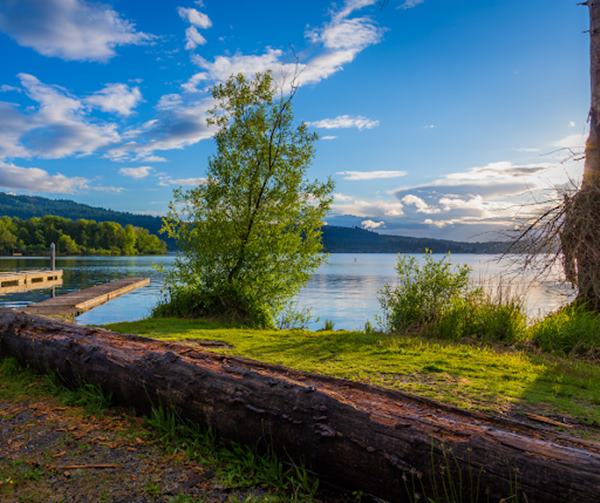
Lake Washington, the largest lake in Washington, offers excellent fishing opportunities for anglers of all levels. However, if you’re looking to explore more fishing options near Lake Washington, you’re in luck! Washington State is home to numerous other fantastic fishing lakes that are worth exploring.
1. Lake Sammamish
Fishing in Lake Sammamish
Located just east of Lake Washington, Lake Sammamish is a popular fishing destination known for its diverse fish populations. With easy access from Seattle and Bellevue, anglers can enjoy a day of fishing without venturing too far from Lake Washington.
Fish Species in Lake Sammamish
- Cutthroat Trout
- Kokanee Salmon
- Smallmouth Bass
- Largemouth Bass
- Yellow Perch
- lack Crappie
- Carp
Best Fishing Spots in Lake Sammamish
- Sunset Beach
- Pine Lake
- Issaquah Creek Inlet
- Tibbetts Beach
- Larsen Lake
2. Lake Stevens
Fishing in Lake Stevens
Lake Stevens, located in Snohomish County, is another fantastic fishing spot near Lake Washington. This 1,000-acre lake offers a variety of fish species and is a popular destination for both boat and shore anglers.
Fish Species in Lake Stevens
- Rainbow Trout
- Kokanee Salmon
- Smallmouth Bass
- Largemouth Bass
- Yellow Perch
- Black Crappie
- Bluegill
Best Fishing Spots in Lake Stevens
- Wyatt Park
- North Cove Park
- Public Access Area at South End
3. Lake Washington Ship Canal
Fishing in Lake Washington Ship Canal
The Lake Washington Ship Canal offers a unique fishing experience near Lake Washington. This man-made waterway connects Lake Washington with the Puget Sound and provides anglers with the opportunity to catch a variety of fish species.
Fish Species in Lake Washington Ship Canal
- Chinook Salmon
- Coho Salmon
- Sockeye Salmon
- Steelhead Trout
- Cutthroat Trout
- Smallmouth Bass
- Largemouth Bass
- Yellow Perch
Best Fishing Spots in Lake Washington Ship Canal
- Ballard Locks
- Fremont Cut
- Montlake Cut
4. Lake Samish
Fishing in Lake Samish
Located south of Bellingham, Lake Samish is a picturesque lake that offers great fishing opportunities. Surrounded by scenic beauty, this lake is a favorite among anglers looking for a tranquil fishing experience.
Fish Species in Lake Samish
- Rainbow Trout
- Kokanee Salmon
- Smallmouth Bass
- Largemouth Bass
- Yellow Perch
- Black Crappie
- Brown Bullhead
Best Fishing Spots in Lake Samish
- Alger
- Fisherman’s Trail
- Samish Park
5. Lake Cushman
Fishing in Lake Cushman
Lake Cushman, located in the Olympic National Forest, offers stunning natural beauty and great fishing opportunities. This reservoir lake is known for its abundance of fish and its pristine surroundings, making it a must-visit for any angler.
Fish Species in Lake Cushman
- Rainbow Trout
- Cutthroat Trout
- Kokanee Salmon
- Smallmouth Bass
- Largemouth Bass
- Yellow Perch
- Brown Bullhead
Best Fishing Spots in Lake Cushman
- Kokanee Beach
- Big Creek
- North Shore
FAQs
Q: What is Lake Washington fishing?
A: Lake Washington fishing refers to the activity of fishing in Lake Washington, which is a large body of water located in the state of Washington.
Q: Where is Lake Washington located?
A: Lake Washington is located in the state of Washington, specifically in the northwest region of the state.
Q: What are some popular fishing spots on Lake Washington?
A: Some popular fishing spots on Lake Washington include Lake Sammamish, Lake Chelan, Banks Lake, Lake Umatilla, and Roosevelt Lake.
Q: Can I fish for kokanee in Lake Washington?
A: Yes, you can fish for kokanee in Lake Washington. Kokanee is one of the fish species that can be caught in the lake.
Q: Are there any fishing opportunities for cutthroat trout in Lake Washington?
A: Yes, Lake Washington offers fishing opportunities for cutthroat trout. Anglers can target this species while fishing in the lake.
Q: What are some fishing prospects on Lake Washington?
A: Fishing prospects on Lake Washington include catching kokanee, cutthroat trout, and crappie. These fish species can be found in the lake.
Q: Are there fishing piers or boat docks available for fishing on Lake Washington?
A: Yes, there are fishing piers and boat docks available on Lake Washington for fishing. Anglers can use these facilities to access the lake for fishing.
Q: Where can I find a fishing pier on Lake Washington?
A: A fishing pier is available at Lake Washington Boulevard Park, located on the west side of the lake in Seattle, Washington.
Q: What are some fishing tips for fishing on Lake Washington?
A: Some fishing tips for fishing on Lake Washington include exploring the shore or venturing out onto the lake with boats, targeting specific fish species based on the season, and using appropriate fishing techniques and baits.
Q: Is fishing allowed in Lake Washington year-round?
A: Fishing in Lake Washington is allowed year-round, but specific fishing regulations and restrictions may apply depending on the fish species and the season. It is advisable to check the fishing regulations before planning a fishing trip.

